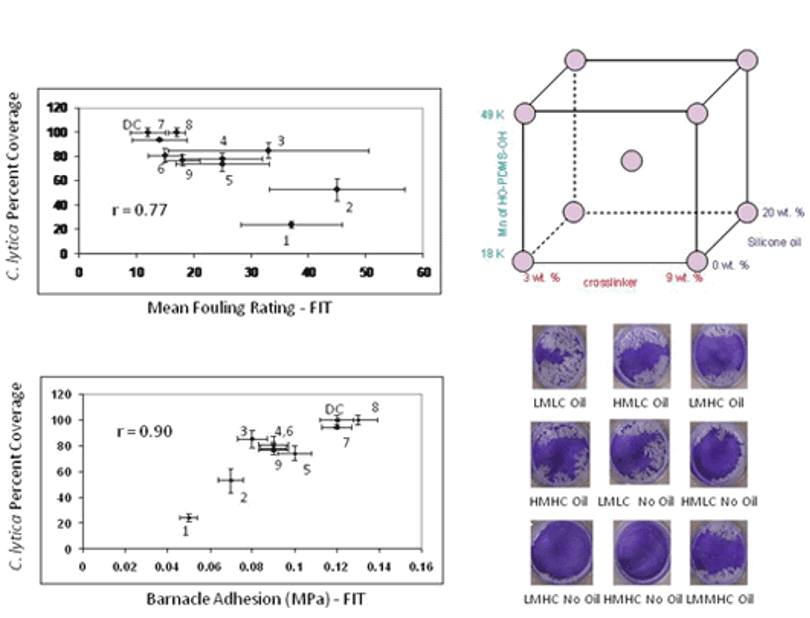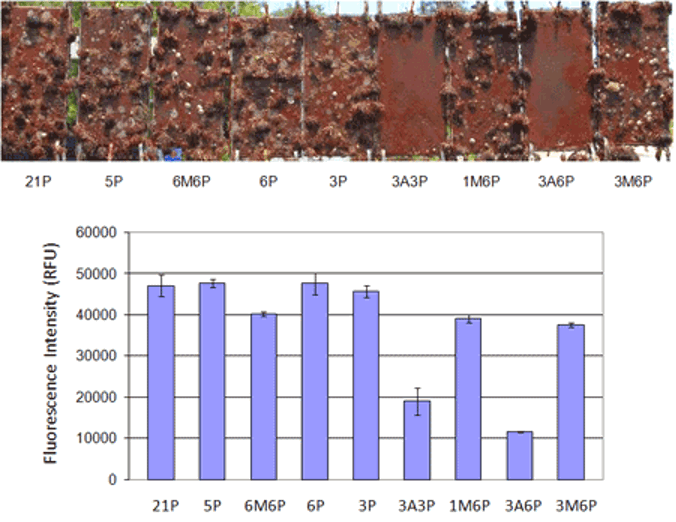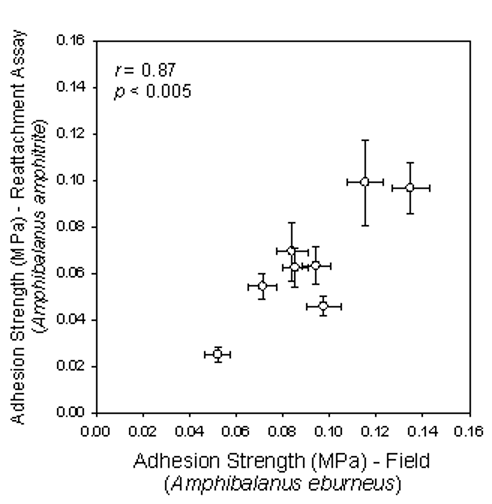Field Testing Correlations

The capacity to accurately and efficiently down select and identify the most promising coating candidates is essential to the overall success of a materials development program predicated upon an accelerated testing approach. In regard to marine coatings, it is imperative that the high-throughput biological screening workflow demonstrates a reasonable degree of correlation to results obtained from static ocean immersion testing. The establishment of such correlations enables a powerful, real world predictive capability that coating researchers can leverage to expedite the discovery of new marine coating technologies.
Bacterial Biofilm Retraction(NDSU) vs. Fouling and Barnacle Adhesion(FIT)

A series of nine polysiloxane fouling-release coatings was evaluated with the bacterial biofilm retraction assay at NDSU and ocean immersion testing at the Florida Institute of Technology (FIT) field testing site in Melbourne, FL. A strong correlation (r = 0.90) was established between the bacterial biofilm retraction data and the barnacle adhesion results. Good agreement was also observed (r = 0.77) between the bacterial biofilm retraction assay and mean fouling rating (i.e., total accumulation of fouling organisms). The bacterial biofilm retraction assay accurately identified the best (LMLC Oil) and worst (HMHC No Oil) performing coatings determined at FIT.
Algal Biofilm Growth (NDSU) vs. Fouling (FIT)

A series of nine antifouling silicone coatings, containing a chemically tethered biocide, was evaluated with the microalgal biofilm growth assay at NDSU (i.e. diatom Navicula incerta) and ocean immersion testing at FIT. A remarkably high correlation (r = 0.99) was established between the algal biofilm growth assay and the mean fouling rating. The two coating compositions that showed excellent antifouling performance at FIT after 30 days of total immersion, 3A3P and 3A6P, also exhibited reduced microalgal biofilm growth at NDSU.
Barnacle Adhesion (NDSU) vs. Barnacle Adhesion (FIT)

The reattached barnacle adhesion assay was also utilized to evaluate the series of nine polysiloxane fouling-release coatings evaluated at the FIT ocean immersion testing site. A strong correlation (r = 0.87) was established between the reattached barnacle adhesion data in the laboratory and the barnacle adhesion results obtained in the field. As with the bacterial biofilm retraction assay, the reattached barnacle adhesion assay accurately identified the best and worst performing coatings determined at FIT.


